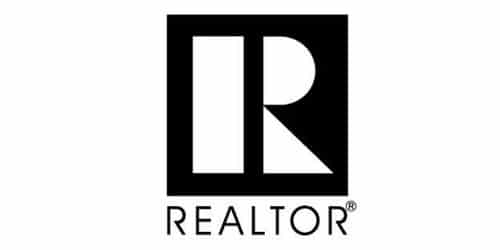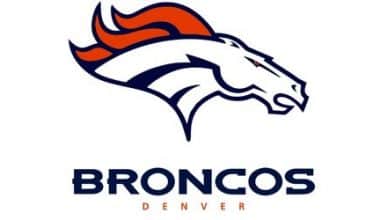Agents in this field are experts at pairing people with the perfect home. Your clients will have to have faith in your aesthetic judgment before they’ll let you help them choose a new place to work or live. The correct real estate branding is essential for gaining clients’ trust, whether you’re in the residential or commercial sectors. A well-designed realtor logo may do wonders for the image of your real estate business and ideas as a real estate agent. However, you may show the world that you’re a member of the National Association of REALTORS® by using the distinctive realtor logo. After choosing the realtor estate logo you wish to use through the help of an attorney, please read and abide by the standards to help preserve the value of the NAR and MLS brands.
Realtor Logo Overview
Every person’s ideal home is reflected in the Realtor logo, much like in a window. Those who assist in acquiring a fresh set of house keys are represented by this symbol. The association is characterized by its emphasis on a businesslike approach and methodical investigation.
- Inception: 1974
- The National Association of Realtors was the organization’s first leader (NAR)
- Headquarters: The United States
Furthermore, the National Association of Realtors is the American company responsible for the Realtor logo (NAR). With approximately 1.45 million members in societies, organizations, and councils, it serves as the voice of the real estate industry and performs self-regulatory functions. Aside from construction, the firm is also involved in real estate brokerage. The company was founded in Chicago in 1908. (USA).
Who Is a Realtor?
A realtor is a member of the NAR, the National Association of Realtors, a trade group for the real estate industry. To identify a real estate professional who is a member of the NAR and subscribes to its code of ethics, the NAR has registered the term “realtor” as a legally protected collective membership mark.
Realtor Logo ( Brand History)
Real estate professionals from all walks of life are represented here, including brokers, sellers, managers, appraisers, consultants, and anybody else whose line of work necessitates a state license. Before changing its name in 1972, the parent firm was known as the National Association of Real Estate Exchanges and was based in Illinois. The organization was once known as the National Association of Real Estate Boards but changed its name to the National Association of Realtors in 1972.
Furthermore, because of her, the word “REALTOR” became a trademarked capitalized word. This last name change is crucial. The author is Charles N. Chadbourn, a real estate agent and associate vice president headquartered in Minneapolis. In 1916, at the group’s national conference in New Orleans, the word was officially adopted.
It was in 1949 that the NAR was given a trademark registration number in the United States. A year later, the business successfully registered the word “realtor” for a second time. Since then, it has been considered hers. It also grows and expands into other territories, eventually becoming the central logo throughout all organizational branches. Two, in fact.
How The Brand Evolved From
After its last rebranding in 1972, the corporation adopted this visual language. But before that, her logo didn’t include the word “Realtor,” therefore the clock starts ticking when the new trademark is registered. The logo is a blue (or black) square with a big “R” in the middle. It’s constructed with an isosceles triangle (right element), a semicircle (center element), and a vertical rectangle (left leg) (bottom leg). However, each component is stored in its own designated location, with a minimal amount of space between them.
There are also two text labels on the logo. The one closest to the square is an expansion of the brand name “REALTOR,” and it serves as the brand’s identifier. As seen by the aforementioned registration, it is written entirely in capital letters, sans serif characters. The rightmost portion of the brand “R” is not joined to the leftmost, making it look like a graphic “R.”
Furthermore, you may find the complete name of the group, “National Association of Realtors,” not far away. The text is set in a thin-serif font. The company-designating conjunction “of” is written in italics and by hand, while the remainder of the text is typeset in a standard font. The three lines of text are set on a white background.
In the year 2020, modifications were made to the logo. The designers ditched the text at the bottom, brightened up the square touch, and adopted a new font for the organization’s entire name. The term “realtor” is now highlighted in blue and appears in all capital letters. The italics were changed to bold grotesque to match the remainder of the text.
Emblem Typeface and Color Scheme
Unless you count switching the typeface and updating the color scheme, there is nothing to report about the development of the logo because it never existed. Besides minor cosmetic differences, the two variants (early and late) seem identical: a square containing a stylized “R” and the entire name on the right. However, the association didn’t begin until 1908, making 1974 a significant year for the insignia.
The font used in the first serif edition is evocative of Adobe’s Garamond Pro Regular, Arno Pro Display Regular, and Hoftype’s Erato Light. In addition, the current iteration is fragmented and looks a lot like Latinotype’s Texta Heavy font.
Furthermore, the logo appears in both corporate blue PMS 293 and black and white color schemes. The first square has a white letter on a blue backdrop, whereas the second square has a black letter on a white background.
Five Most Important Facts About REALTOR® Logo
How well do you understand the REALTOR® brands and how to use them properly? Below are five essential facts.
#1. With Certain Restrictions, Members May Utilize the Realtor® Logo
Members may only use the REALTOR® trademarks when specifically referring to themselves as NAR members. In order to keep the marks’ worth high, they must always be used to specifically identify NAR members and never as a synonym for a profession or a type of company.
In order to maintain the integrity of the trademarks, members may only use them in connection with the real estate services they provide and the location of their business.
#2. A Realtor Logo Is Available for Online and Promotional Use
Only in conjunction with a member’s name or the legal name of a member broker’s real estate business may the REALTOR® marks be used in a username to denote membership in NAR. There is no need to use a comma or other punctuation after a member’s name or the name of their real estate business when using the REALTOR® marks in a username, email address, or domain name.
Furthermore, merchandise bearing the marks is permitted, including but not limited to T-shirts and baseball caps, so long as the member’s or company’s name appears on the item. On the other hand, franchisees are not allowed to use the trademarks in any kind of official promotional materials.
#3. To Be a Realtor, One Must Be a Member of the National Association of Realtors
One who holds membership in the National Association of REALTORS® is known as a REALTOR®. Never replace the words “real estate agent” with “REALTOR®,” as this is a trademarked phrase with a specific meaning.
These are some of the REALTOR® trademarked logos:
- REALTOR®
- REALTORS®
- REALTOR-ASSOCIATE®
- The REALTORS® octagonal “R” symbol
As a realtor, you are more than simply a real estate agent; you are also a member of a professional organization committed to upholding a code of ethics designed to safeguard the interests of your customers, the general public, and your fellow REALTORS®.
Furthermore, as a trademark held by NAR and protected by federal law, the use of the term REALTOR® provides members with a significant advantage over non-member real estate licensees through an attorney.
#4. The Realtor Logo Design Standards Must Be Followed
REALTOR® (all caps, with the ® sign) is the preferred version of the term. If you can’t use the sign, “REALTOR” in all capital letters is an acceptable substitute.
The REALTOR® block ‘R’ logo features the letter R in Futura Typeface against a contrasting rectangular background, forming a block “R,” with the name REALTOR® centered below. In addition, a contrasting color must be used for both the rectangular block and the term REALTOR® that is centered under it.
#5. The Use of Realtor® Trademarks Is Restricted to Realtor® Members
In no circumstances may a person or company who is not a member of the National Association of REALTORS® use any of the REALTOR® trademarks in any way.
However, the marks can be used in certain nominal contexts. Use of the marks to correctly identify an individual as a member of NAR or in reference to a Member Board is permitted in various media, such as newspapers, periodicals, radio, and television.
Can I Use the Word “Realtor” in My Logo?
No, the REALTOR® marks are not permitted to be included in the official or trade name of any company. Members are granted permission to use the REALTOR® marks in connection with the official name of their real estate company (i.e., real estate brokerage) in promotional materials such as advertisements, signs, and other similar items.
What is Realtor Logo MLS?
The MLS realtor logo was developed to be an instantly identifiable and legible mark that can be used across all forms of media. It has been improved so that it can act as an identity that is suitable for mobile devices. In order to make the logo system more legible when it is put to use and bring it into conformity with ADA standards, the structure of the logo has been altered to make it more current. Furthermore, The Multiple Listing Service (MLS) Realtor logo is a service mark that is composed of two different logotypes: the first one is that of the National Association of Realtors, and the second one is the MLS emblem.
The MLS Realtor Logo Meaning and History
The method that real estate agents use to collect information about properties and share it with one another is referred to as a “multiple listing service,” and the phrase “multiple listing service” (MLS) is the common name for this system.
Furthermore, the large letter “R” in a stylized font is included in the Realtor Service Logo, which is really the insignia of the National Association of Realtors (NAR) and MLS. The letter is composed of three different types of geometric shapes: a rectangle, a triangle, and a portion of an ellipse. A box that is either dark blue or black is used to enclose the letter “R.” Below the box that is provided is the word “Realtor” written in either a dark blue or black font.
The Realtor logo MLS is a huge, rectangular icon, 30% tinted in the primary hue (blue or black). On the inside of the rectangle, the abbreviated name of the service bundle appears in larger letters, while the full name, Multiple Listing Service, appears in smaller ones. The MLS Realtor logo appears in the upper left corner of the mark.
The letters of “MLS” are set in a flattened, bold, italic, san serif font. MLS is written in a monolinear sans serif font. The MLS Realtor logo is written in a simple monolinear typeface, also sans serifs, but it is neither bold nor italicized. However, the MLS Realtor logo comes in three different color options: blue, black, and plain black and white. The blue variant has dark blue writing and a blue border on a lighter blue background. The letter “R,” which is white, sits inside a dark blue square, which sits inside a white rectangle framed in dark blue. The black version’s huge grey rectangle has black text and a black frame.
Do Realtors Need a Logo?
False, the right to utilize the Marks is not a condition of membership but rather a benefit. Members can use the REALTOR® marks in marketing materials, such as business cards and advertisements, to show that they are associated with NAR and are real estate professionals.
Is a Logo a Legal Requirement?
You have what is called a common law trademark for your logo merely by owning one. That implies you have the complete legal authority to modify and use that logo in any way you like, without having to file any paperwork. However, the security of that right is compromised in the absence of a federally registered trademark.
Realtor Logo Ideas
Since real estate is so competitive, standing out is of the utmost importance. It’s of many great ideas to start if you’re in the real estate business and you have a professional realtor logo. As a real estate agent, your realtor logo serves as a point of differentiation and an instrument of brand building. However, Identifiable real estate firms, like those in other industries, need to employ effective branding tactics.
Logos are proven symbols for establishing a firm’s credibility and standing in a niche market. ideas of a well-designed logo can also increase brand recognition and customer loyalty as a realtor. Keep in mind that a logo creator can also help you get instant access to dozens of unique logo concepts that answer your design brief.
Logos in the real estate business often feature standard design elements, such as a house or a roof. However, this did not result in a successful emotional response from the audience. Therefore, designers place a premium on novel ideas while creating a realtor logo.
So, What Ideas Go Into Making a Logo for a Realtor?
There are several things to keep in mind if you want to develop a stunning logo for a Realtor.
#1. Simplicity
It’s not hard to see that even the most well-known real estate agency logos are rather straightforward. The rationale for this is that a realtor logo that isn’t too complex can be used in a wider range of ideas, formats, and sizes. Also, it’s more straightforward to remember than a logo that features a jumble of different forms, hues, and sizes.
#2. Memorability
If you want your customers to remember your ideas as a realtor whenever they see your logo, it needs to stand out. In addition, in the local real estate market, your name and business should stand out from the competition.
#3. Brings Out the Proper Feeling
Also, your logo ideas need to strike the proper note as a realtor. Aim for something classier and more refined for your logo if you deal exclusively in high-end real estate. Selling urban, contemporary homes? Your real estate company as a realtor might benefit from the ideas of a good logo that conveys a sense of the modern.
#4. The Style That Stands the Test of Time
A superb logo, in a similar vein, adopts a classic style that won’t look dated even if a flashier real estate logo design trend emerges in the future.
#5. Balance
Finally, your logo’s design should strike a balance between its many parts. When designing a logo, it’s important to keep the margins consistent between and around the various elements.
What Is a Realtor Trademark?
The word “REALTOR®” is a federally recognized trademark belonging to NAR. This advantage of NAR membership is a great way to show customers and other realtors that you value ethics. The REALTOR® logo and the terms REALTOR®, REALTOR-ASSOCIATE®, and REALTORS® are membership marks owned by NAR and must be used in accordance with the guidelines set out in the Membership Marks Manual.
However, As a trademark owned by NAR and protected by federal law, the name REALTOR® is not only a vital membership benefit that sets NAR members apart from all others in the real estate business but also a source of great pride for the organization. In addition, to raise awareness about the value of REALTOR® trademarks and the rules for their use, the NAR’s Legal Affairs department has launched a Trademark Awareness Campaign.
Can I Use a Logo if I Don’t Sell It?
According to the Lanham Act, a person who is not the registered trademark’s owner may make “fair use” of the trademark without obtaining the owner’s consent. Logo usage in editorial content is an example of fair use.
You need the other company’s permission before using their logo, or else you risk being sued for trademark infringement. Trademark law protects the rights of the trademark holder from unauthorized use. Anyway, once you’ve been granted permission, you can use it however you choose without fear of repercussions.
What Should You Avoid in a Logo?
There are more eyes on your company than ever before, thanks to the widespread use of the internet. The success of your business depends on being able to deliver your message to customers with a clear and memorable logo. In spite of how important it is for your company’s success, logo creation can be challenging. Sometimes, even the most well-run businesses make a mistake.
In the end, your logo is an expense that must be justified. It is not enough to put resources into buildings and machinery; a company’s logo also requires investment. Your company will reflect the amateurish or unpleasant appearance of your logo. If you want to avoid having your hard work on a logo design go to waste, be sure to avoid these common errors.
#1. Poor Font Choice
Font choice may make or break a logo design. Going over the top with fonts will merely make your brand look foolish or unprofessional. It’s usual for a logo to fail due to a bad font (like the infamous Comic Sans or Papyrus).
However, fonts reflect a company’s personality. Your business’s brand should have the correct typeface personality. A hand-drawn typeface vs. a serious, forceful font will convey contrasting traits. Spend time studying company-appropriate fonts. Don’t be scared to test out new fonts or adapt them to match your needs. You could make one.
#2. Too Abstract
Attempting to simplify the logo too much is another common mistake. There’s still a lot of nuanced meaning you need to get over to consumers with this design. Never expect your readers/viewers will mentally fill in the holes for you.
You haven’t done your job if a viewer of your logo is left wondering what it all means or feeling frustrated because they can’t put the parts together. However, It’s important to keep things as straightforward as possible without sacrificing functionality. Don’t be shy about filling in the details; a little goes a long way. Your company’s mission can be conveyed effectively with the use of just a few well-chosen fonts, colors, and image layout features.
#3. The Use of Raster Images
A vector graphics program is a must-have for logo design. Given that a vector graphic is composed of mathematically accurate points, it retains its integrity when scaled to any size and presented in any medium. Instead, you can use a raster image, which is composed of individual pixels. Because of this, your logo will appear grainy and pixelated when enlarged.
Now more than ever, it’s crucial that logos look good across a wide range of screen sizes, as the age of the internet and smartphones draws near. People will be able to see your logo regardless of the device they are using if you avoid employing raster images. If you need to work with vector graphics instead than raster images, try Adobe Illustrator or Corel Draw.
#4. Clashing Colors
Color balance in your logo can be as important as typeface choice. Your logo will look cumbersome and unsophisticated if the colors don’t fit your company’s messaging. First, eliminate color to avoid this issue. This doesn’t imply your logo should be colorless, but start in black and white. After a solid concept and design, apply color.
By then, you’ll have your logo’s shape and know its meaning. You can now try out other colors until you find one that works.
#5. Copycat Design
Nothing is more sure to destroy your design than an attempt to mimic that of a more successful rival. Whether it was done on purpose or not, copying another company’s emblem can hurt your brand recognition. That’s against the law, and you’ll get caught eventually.
If your logo is too similar to that of a competitor, you risk being mistaken for them, even if you didn’t plagiarize. Your company will take the hit if there is a well-known brand whose logo is identical to yours.
Obviously, it would be impossible to check every design ever made for similarities. You should look over your top rivals to see if there are any obvious warning signs that you should be aware of.
Realtor Estate Attorney
Whether you’re looking to buy or sell, real estate is a large investment and life-altering choice. The complexity of real estate law means that even a little infraction can have serious financial repercussions. This is why it’s a good idea to consult a realtor attorney or real estate lawyer before proceeding with certain deals; otherwise, you could end up in legal hot water. To safeguard your property investment, a realtor estate attorney can also advise you on how to avoid potential landmines. Also, read REAL ESTATE CERTIFICATION: Top 10 Picks & How To Obtain Them.
Who Is a Realtor Estate Attorney?
A realtor estate attorney is a lawyer who specializes in the legal aspects of buying and selling property. The lawyer can act on behalf of either the purchaser or the vendor, or the creditor. They are responsible, among other things, for drafting and reviewing all of the necessary documents associated with the property’s sale and acquisition.
Realtor Estate Attorney Duties
There is a wide range of what real estate attorneys can do for you. Some specialize in the development, sale, and purchase of residential dwellings, while others have more comprehensive knowledge encompassing all types of property, and yet others concentrate only on transactions involving commercial properties, such as office space. Here are some realtor estate attorney duties.
#1. Real Estate Contract Negotiation
When you hire a realtor estate attorney to represent you, he or she will perform due diligence by negotiating favorable conditions for you in the contract. They provide guidance to ensure the deal complies with federal and state regulations.
#2. Create and Evaluate Property Agreements
The realtor estate attorney verifies that the purchase, mortgage, or rental agreement meets all applicable legal standards and has all necessary provisions.
#3. Policy Drafts for Title Insurance
If a claim by a third party arises after a real estate transaction has closed that was not discovered during the title search, the policyholder might seek compensation under the terms of the policy’s insurance provision. In addition, a realtor estate attorney can do more than just draft title insurance policies; they can also examine them for gaps in coverage and other problems.
#4. Provide Representation in Foreclosure Proceedings
Judicial foreclosures, in which the lender sues the owner of a property to recover the property because the owner has defaulted on the loan, also necessitate the services of real estate attorneys.
#5. Deal With Zoning and Land Use Issues
The usage of land is governed by a variety of local ordinances. Zones can be designated for single-family residences, multi-family dwellings, businesses, or a combination of these. Furthermore, an attorney specializing in realtor estate law can assist property owners or buyers in opposing or pursuing a rezoning petition.
What Are the 4 Rules of a Good Logo?
Does your organization recognize the significance of its logo? It’s on everything from your business cards to your website and is read by clients, prospects, vendors, and the media. So, your logo is the first thing people see when they encounter your organization. Your logo is a representation of your company and the impression it makes is crucial. Even if you work out of your basement, you may still look professional by presenting yourself in a confident and articulate manner. Here are the 4 rules of a good logo.
- An effective logo will convey
- There must be some meaning behind a logo.
- A logo must be versatile
- For a logo to be effective, it must be simple.
Can Someone Steal Your Logo?
When one party inappropriately utilizes another’s trademarked logo without authorization, this is known as “logo theft.” However, ” Trademark infringement, to be more precise, can take numerous forms.” Brand or service name piracy is a common form of this.
Do I Need to Register My Logo?
The company’s logo is vulnerable to imitation if it isn’t protected by a trademark. A realtor logo can be trademarked so that customers know immediately whose company made their purchase.
Can I Trademark My Logo Myself?
You can protect your logo by submitting it to the USPTO as a trademark. Anyone with the authority to file on behalf of a U.S.-based firm can do so through the USPTO’s online application system. in addition, for those outside the United States, filing a patent application will necessitate the services of a patent attorney.
Is My Logo Automatically Copyrighted?
Yes. When a logo features artwork or design (and not just the company name), it is protected as an original work of art by virtue of copyright legislation. In addition, the logo is an artistic creation that deserves the protection afforded by copyright.
Conclusion
A logo for a real estate agent can convey the company’s values, offerings, and mission in a single, easily recognized symbol. Alternately, the way a design is implemented can provide a message. This is especially true when trying to convey complex ideas like simplicity, luxury, high tech, low tech, or antique. And sometimes, like with Amazon’s A-to-Z logo or Twitter’s bird logo, the logo is meant to convey a deeper meaning that is either not immediately apparent or requires some background information to fully grasp.
Similar Posts
- How to buy a house in Texas
- REAL ESTATE AGENT VS BROKER: What’s the Difference?
- HOW TO CHOOSE THE RIGHT REAL ESTATE CRM AS A REALTOR
- HOW TO SELL A HOUSE WITHOUT A REALTOR: Pros & Cons And Why You Should Consider It






